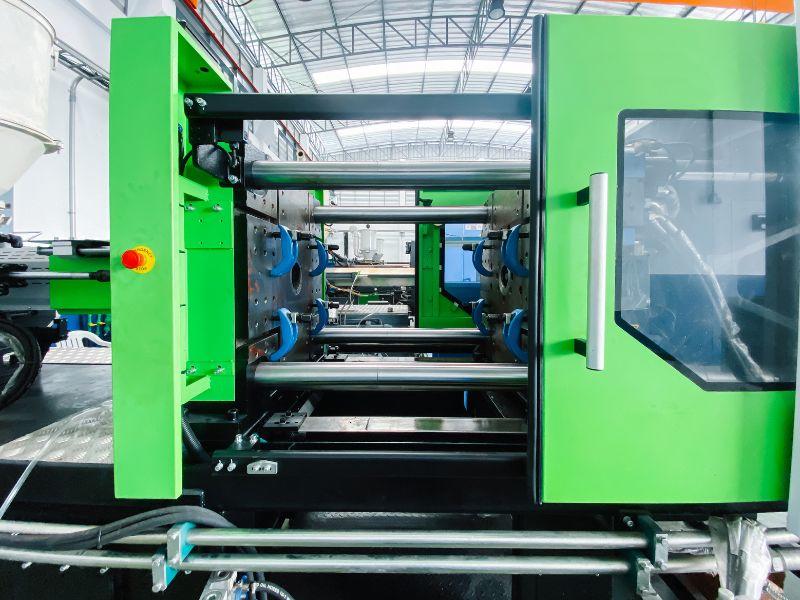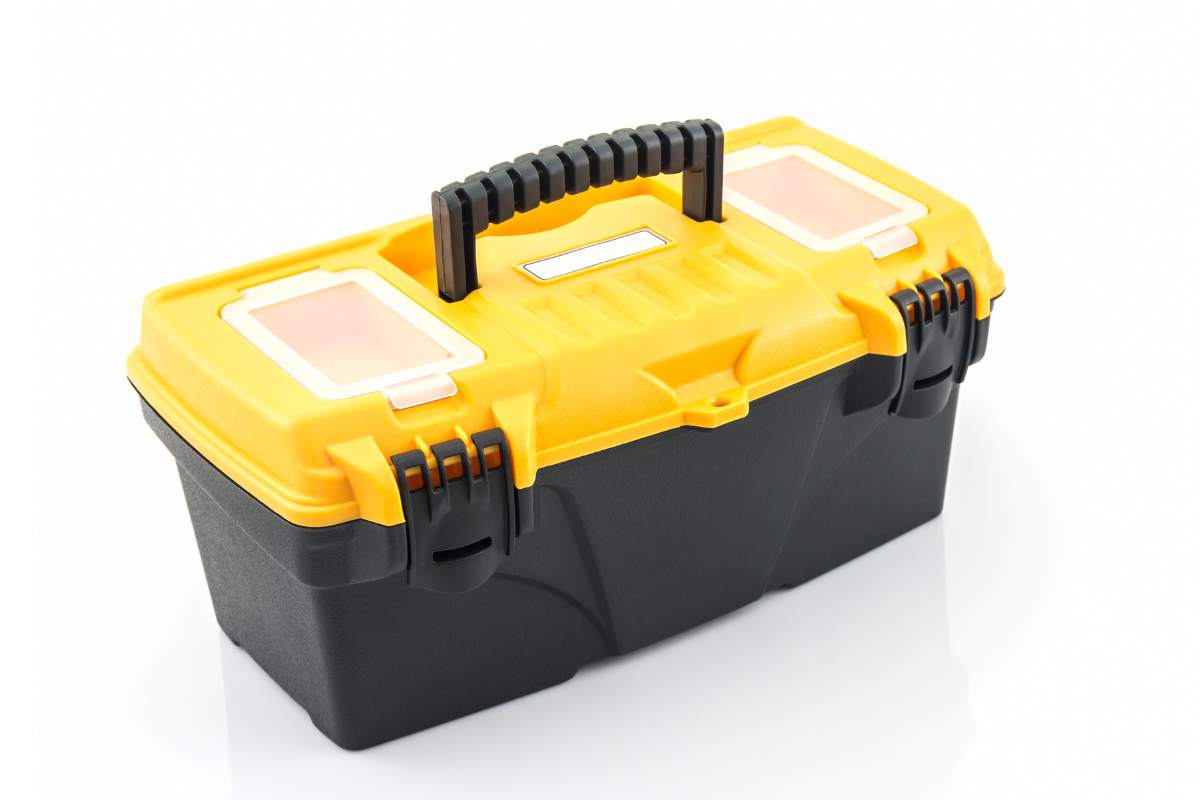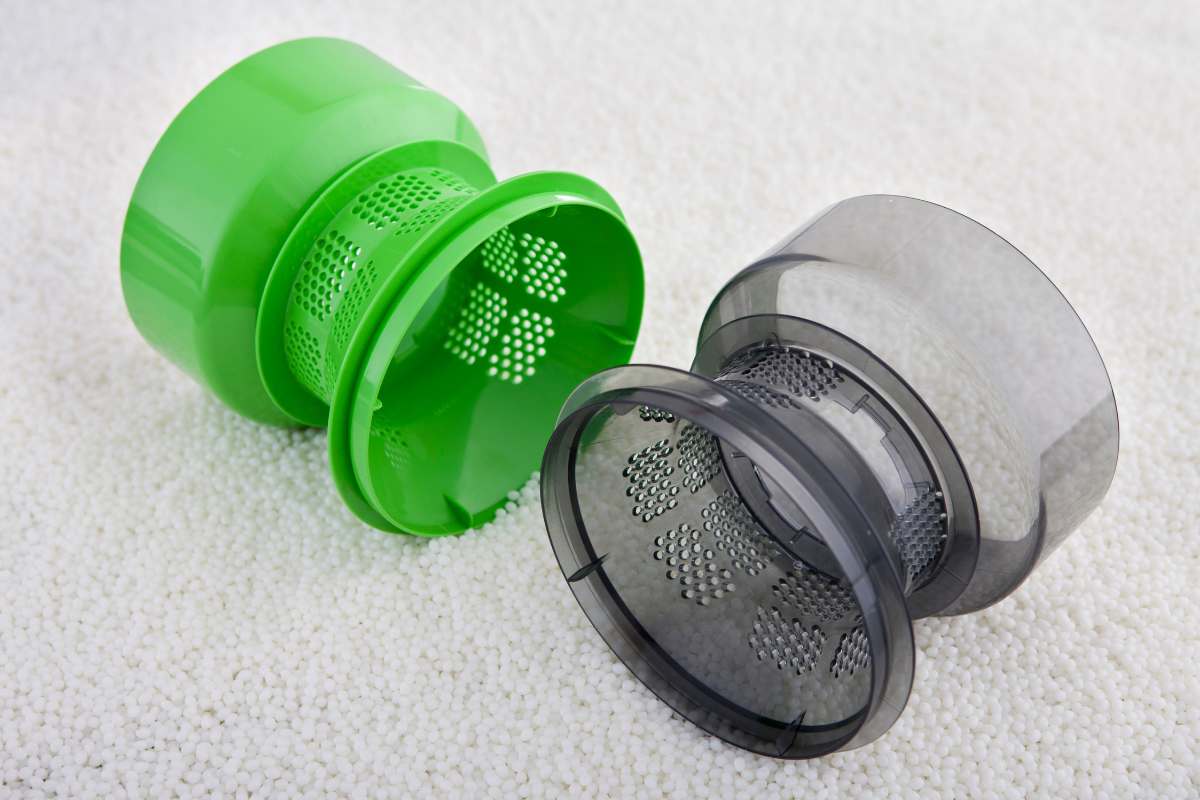What is Plastic Moulding
Plastic moulding is the plastic work through the Injection moulding machine, The melted plastic will automatically molten after erupting out in all of the plastic moulding methods, injection plastic moulding has been the most widely used. The method comprises the following steps: getting the thermoplastic plastic or the thermosetting plastic imported into the heating cylinder of the injection moulding machine, and when it is completely melted, it will produce heat and frictional heat by the pressure of the plunger or the screw, and is injected into the mould cavity of the closed mould, after curing, and then open the mould and take out the finished product.
Plastic moulding is the principal method of forming thermoplastic materials. Modifications of the plastic injection molding process are sometimes used for thermosetting plastics.
The problem with plastic moulding of thermosetting materials is that, under heat, these plastics will first soften, then harden to an infusible state. Thus it is essential that no softened thermosetting material in the heating chamber be allowed to remain there long enough to set. Jet molding, offset molding and molding using a screw-type machine overcome this problem by liquefying the thermosetting plastic material just as it goes through the injection nozzle into the plastic mold, but not before.

Type of plastic molding
There are many type of plastic moulding process, below we will briefly explain each type of plastic mouldings.
Blow Molding
Blow molding is a method of forming hollow articles out of thermoplastic materials.
Blow molding is a process of forming a molten tube of thermoplastic material, then with the use of compressed air, blowing up the tube to conform to the interior of a chilled blow mold. The most common methods are extrusion, injection, and injection-stretch blow molding.
The continuous-extrusion method uses a continuously running extruder with a tuned die head that forms the molten plastic tube. The tube is then pinched between two mold halves. A blow pin or needle is inserted into the tube and compressed air is used to blow up the part to conform to the chilled mold interior. Accumulator-extrusion is similar, however, the molten plastic material is accumulated in a chamber prior to being forced through a die to form the tube.
Injection molding
Injection blow molding is a process of injection molding a preform (similar to a test tube), then taking the tempered preform to a blow mold to be filled with compressed air to conform to the interior of the blow mold. Injection-stretch blow molding can be a single-stage process similar to standard injection blow molding, by adding the element of stretch prior to blow forming. Also, a two-step process is possible, where a preform is made in an injection molding machine, then taken to a reheat-stretch blow molding machine for preform reheating and final blow forming in a blow mold.
Thermoforming molding
Thermoforming of plastic sheet has developed rapidly in recent years. This process consists of heating thermoplastic sheet to a formable plastic state and then applying air and/or mechanical assists to shape it to the contours of a mold.
Air pressure may range from almost zero to several hundred psi. Up to approximately 14 psi (atmospheric pressure), the pressure is obtained by evacuating the space between the sheet and the mold in order to utilize this atmospheric pressure. This range, known as vacuum forming, will give satisfactory reproduction of the mold configuration in the majority of forming applications.
Themoset Transfer Molding
Themoset Transfer molding is most generally used for thermosetting plastics. This method is like compression molding in that the plastic is cured into an infusible state in a mold under heat and pressure. It differs from compression molding in that the plastic is heated to a point of plasticity before it reaches the mold and is forced into a closed mold by means of a hydraulically operated plunger.
Themoset Transfer molding was developed to facilitate the molding of intricate products with small deep holes or numerous metal inserts. The dry mold compound used in compression molding sometimes disturbs the position of the metal inserts and the pins which form the holes. The liquefied plastic material in transfer molding flows around these metal parts without causing them to shift position.
Reaction Injection Molding
Reaction injection molding (RIM) is a relatively new processing technique that has rapidly taken its place alongside more traditional methods. Unlike liquid casting, the two liquid components, polyols and isocyanates, are mixed in a chamber at relatively low temperatures (75° – 140° F) before being injected into a closed mold. An exothermic reaction occurs, and consequently RIM requires far less energy usage than any other injection molding system.
The three major types of polyurethane RIM systems are rigid structural foam, low-modulus elastomers, and high-modulus elastomers.
Reinforced RIM (R-RIM) consists of the addition of such materials as chopped or milled glass fiber to the polyurethane to enhance stiffness and to increase modulus, thus expanding the range of applications.
Compression Molding
Compression molding is the most common method of forming thermosetting materials. It is not generally used for thermoplastics.
Compression molding is simply the squeezing of a material into a desired shape by application of heat and pressure to the material in a mold.
Plastic molding powder, mixed with such materials or fillers as woodflour and cellulose to strengthen or give other added qualities to the finished product, is put directly into the open mold cavity. The mold is then closed, pressing down on the plastic and causing it to flow throughout the mold. It is while the heated mold is closed that the thermosetting material undergoes a chemical change which permanently hardens it into the shape of the mold. The three compression molding factors — pressure, temperature and time the mold is closed — vary with the design of the finished article and the material being molded.
Extrusion Molding
Extrusion molding is the method employed to form thermoplastic materials into continuous sheeting, film, tubes, rods, profile shapes, and filaments, and to coat wire, cable and cord.
In extrusion, dry plastic material is first loaded into a hopper, then fed into a long heating chamber through which it is moved by the action of a continuously revolving screw. At the end of the heating chamber the molten plastic is forced out through a small opening or die with the shape desired in the finished product. As the plastic extrusion comes from the die, it is fed onto a conveyor belt where it is cooled, most frequently by blowers or by immersion in water.
In the case of wire and cable coating, the thermoplastic is extruded around a continuing length of wire or cable which, like the plastic, passes through the extruder die. The coated wire is wound on drums after cooling.
In the production of wide film or sheeting, the plastic is extruded in the form of a tube. This tube may be split as it comes from the die and then stretched and thinned to the dimensions desired in the finished film.
In a different process, the extruded tubing is inflated as it comes from the die, the degree of inflation of the tubing regulating the thickness of the final film.

Plastic Moulding Knowledge Guidance
1 The basic knowledge of plastic molding.
1.1 The characteristics and composition of plastic injection moulding.
Plastic Injection moulding is to fill the molten moulding material in a closed mould with high pressure. The pressure that the plastic molding cavity needs to be subjected to about 400 KGF / CM2, approximately 400 atmospheres. With such a high pressure to make a product is its characteristic which is not the only an advantage but also disadvantages. In other words, the mold always has to be made stable, therefore its’ price is always high. So must be mass-produced in order to buckle with high-priced mould costs. For example, the production of each batch must be more than 10000PCS to be reasonable. In other words, plastic molding work surely has to be a mass-production.
A few steps of the plastic molding process :
1.1.1 Closing
Close the security and then start moulding
1.1.2 Clamping mold
Moving forward the moving board in order to get the mould closed. When the mould is closed which means is also locked.
1.1.3 Injecting (including holding press)
The screw is quickly pushing forward, injecting the molten formed plastic material into the mould cavity to full fill it. Keeping the press at the same time after full filling it, this action is particularly named “holding press.” The pressing that the mold has to bear when it just gets full filled, generally called ‘Injection Press’ or ‘one press’.
1.1.4 Cooling off (and the next step of the plasticization project)
The process of waiting for the material getting cool formed in the mould cavity is called “cooling off”, At this time the injection device is also ready for the next step, this process is called “plasticization process. The moulded material is placed in the hopper, inflow into the heated tube to heat, it is based on the rotation of the screw turning the raw material into the molten status.
1.1.5 Opening the mould
Move the moving board to the backward and the mould will be opened.
1.1.6 Opening the security door
Opening the security door, then the machine will be in the standby status.
1.1.7 Picking up
Taking out the product, checking carefully if there is anything left in the mould cavity, and this whole forming operation is called moulding cycle time. The finished product is shaped by the shape of the mould. The mold is composed of the left mould and the right mould, These two sides of moulds are left with voids, and the material would flow into the voids and get compressed to finish the product. There are three main lines of the path of the molding material before it flows into the left side and right side, sprue, runner, gate, and so on.
1.2 Injection molding machine
Injection moulding machine is distinguished from two large projects, they are divided into two, clamping device and injection device.
1.2.2 clamping device
Closing the mould, the molding material would be cooled off and solidified in the mould cavity. Opening the mould cavity and take out the finished product is the action of the clamping device
1.2.3 Injection Device
Injecting the plastic material into the mould cavity called ‘Injection device’
The following describes the ability of the injection moulding machine, there are three provisions to distinguish the ability of it.
A. Clamping force
When the injection is made, the mould won’t be opened by the maximum clamping force, expressed as the number of TON.
B. Injection volume
The weight of a shot is generally expressed in terms of grams.
C. Plasticizing capacity
A certain amount of time able to melt the amount of resin, this is generally expressed in terms of grams. The most important part is the clamping force, the area of the moulded article is referring the mould perpendicular to the shadow of the opening and closing direction (basically the moud’s area). The average pressure within the mold added to the projection area is called the clamping force. If the mold “projection area × average pressure” is greater than the “clamping force” then the left and the right side moulds will be pushed out.
Clamping force = projection area × average pressure within the mold In general, the mold can withstand the pressure of 400KGF / Cm2, so base on this figure to calculate the clamping force, but the clamping force often based on the shape of forming materials and the shape of the product’s vary, the difference between the larger parameters such as PE, PP, PS, ABS materials, these raw materials are used to make the shallow box, the parameter is 300KGF / CM2.
If the depth of the box is deeper then the parameter is 400 KGF / CM2, If it is the small but high precision products. The projection area is about 10CM2 or less, its parameters are 600KGF / CM2. The smaller parameters such as PVC, PC, POM, AS materials, these materials are also used to make a shallow box, the parameters of 400KGF / CM2, if it is a deep box of its parameters is 500KGF / CM2, if it is a small and high precision products, projection area of about 10CM2 below, its parameter is 800KGF / CM2.
To working with Plastic Moulding is not easy, if you have a project that needs plastic molding service you need to find a professional plastic molding company to support you, to reduce your plastic mold and Injection moulding cost, find a Chinese molding company to support you will be one of the best options, plastic mould and moulding parts from China mold company has inexpensive price and short lead time, this is no reason that you do not choose your plastic molding supplier from China, on the world, over 80% or overseas companies that buy products from China, China is the biggest manufacturer country on the world, this is no doubt about this,

Finding the right source for all your injection molded thermoplastic parts is as easy as selecting DONGGUAN SINCERE TECH CO.LTD (SINCER ETECH). If you need quality injected-molded parts from an ISO 9001:2000 Certified supplier, and you need them on time, ACM is the answer.
Plastic Mold & Plastic Molding Parts Service: Your One-Stop Solution
Sincere Tech is a top 10 injection mold companies in China, offer injection mould, plastic moulding service to the world, 90% of our mold and parts are export to American, Europe, and the world, SINCERE TECH is a “one-stop, one-responsibility” company. our skilled, quality-minded thermoplastics professionals are committed to superior service, providing solutions to customers’ needs from concept to finished product. At our modern plastic molding facility you will be guaranteed:
- Top quality products
- The latest in technological equipment
- Cost-effective manufacturing processes
- Quality assurance procedures
We are capable of producing a wide variety of plastic parts and components, for industries of all types, including:
- A / C Vents
- Actuators
- Bezels
- Blood Testers
- Boat Parts
- Bobbins
- Bottle Ties
- Boxes
- Brackets
- Buckles
- Cases
- Clips
- Component Boxes
- Computer Peripherals
- Connectors
- Cosmetic Packaging
- DVD / VCR Faceplates
|
- Faucet Extrusions
- Flower Pot Bases
- Fuse Blocks
- Gear Shift
- Knobs
- Gears
- Housings
- Junction Boxes
- Key Fobs
- Knobs
- Lenses
- Light Pipes
- Motor Housings
- Name Plates
- Phone Parts
- Push Buttons
|
- Radiator Tops
- Seat Belt Parts
- Shields
- Spacers
- Spools
- Switches
- Tail Lamp Sockets
- Toys
- Trim Plates
- Typewriter Parts
- Vents
- Vials
- Wedges
- Window Lift Parts
- Wire Shields
|
SINCERE TECH’s Capabilities
SINCERE TECH’s molding machines range from 60-ton to 2000-ton. We are equipped to mold products from many varieties and grades of resin, each with different properties, including:
- Thermoplastic commodity resins
- Engineering grade resins (filled and unfilled)
- Elastomeric materials
Read more details about our Production Facility and Equipment.
Additionally, our facilities can provide a number of secondary operations, such as:
- Assembly
- Pad Printing
- Painting
- Drilling
- Ultrasonic Welding
- Milling
- Ultrasonic Insertion
Read more details about our Production Facility and Equipment.
You are welcome to send us your new project, we will quote you with 24 hours, we will offer you the best solution for your new project to save you price, not only the injection molding process, but rubber molding, metal parts etc.











